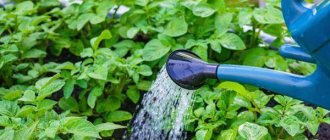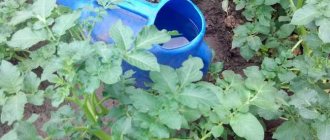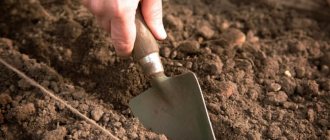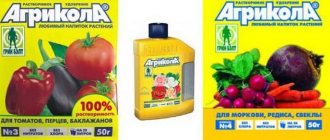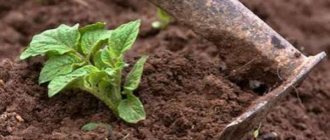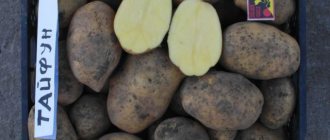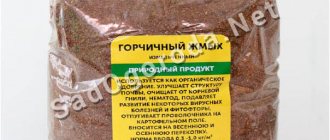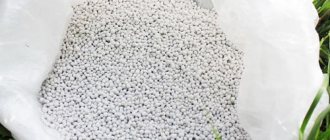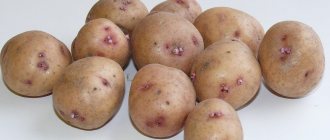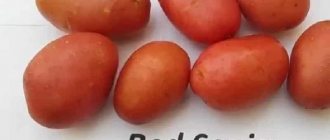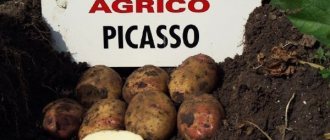Today there are a huge number of effective and good fertilizers that help to significantly increase potato yields, improve their appearance and accelerate growth. Among such a wide choice, it is not always possible to find the best remedy after testing popular drugs in action. Below we consider only the best fertilizers among popular varieties.
Why do you need to fertilize potatoes?
Most gardeners are accustomed to the fact that crops cannot be grown without fertilizers. Potatoes consume nutrients very intensively due to a weakened root system and large tubers. In the autumn, when harvesting, most of the useful fertilizers are removed from the soil. Due to this, it is very important to make up for losses during planting in the new season. Otherwise, the harvest will be smaller and smaller every year.
A few weeks before planting potatoes, it is advisable to sow green manure (plants that improve the composition and structure of the soil).
Deadlines for depositing
You cannot add all the necessary nutrients at once. This will not give the expected result.
Autumn
The first soil fertilization is carried out in the fall while digging the site. Organic matter (manure, compost) and mineral fertilizers (potassium chloride) are added. Over the winter they will rot with plant residues, increasing soil fertility.
Organic matter for potatoes is added in the fall. Manure is scattered around the site at a rate of 5-10 kg per 1 sq.m and everything is dug up deeply.
In autumn they also add per 1 sq.m:
- double superphosphate - 40-70 g;
- potassium sulfate - 25-30 g.
Spring
In the spring, the soil is fertilized with nitrogen agents that promote proper potato growth. Mineral-organic mixtures are often used.
For digging per 1 sq.m :
- Potassium sulfate – 25-30 g.
- Nitroammophoska - 20-30 g.
- Ammonium nitrate - 20-50 g.
When planting in a hole:
- Nitroammophoska – 4-5 g.
- Ash - a handful.
When the above-ground part grows to 12 cm in height, the potatoes are additionally fed with calcium nitrate.
Organic fertilizers
Many years ago, our ancestors used organic fertilizers when growing potatoes. There are many undeniable advantages to using organic matter:
- Organic fertilizers are excellent for all types of soil and have a beneficial effect on microorganisms that enrich the soil with humus. Organic matter gradually releases nutrients, due to which the soil is not oversaturated with nutrients.
- Organic fertilizers contain many microelements - this helps to obtain balanced nutrition, which the crop needs.
- Organic matter heals the soil as quickly as possible. Next, the gardener only needs to maintain its condition without making much effort.
- Such fertilizers are absolutely safe and useful for any crops.
- The use of organic fertilizers provides potatoes with additional substances that strengthen the plant’s immune system, helping to resist diseases.
- Feeding is good because it prevents the plant from growing excessively and uncontrollably.
But organic fertilizers also have several disadvantages that need to be taken into account:
- In some regions it is very difficult to obtain organic fertilizers. For this reason, their cost is much higher than the price of mineral fertilizers.
- Organics will only work if the soil contains microorganisms that can break down organic matter into useful elements.
- During the cold season, organic fertilizers do not release nutrients into the soil.
The best organic fertilizers are:
- Ash. It contains many useful components: phosphorus, potassium, calcium and other trace elements. This fertilizing helps to significantly reduce the acidity of the soil, which is especially important for potatoes, because soil with a high acidity level is not suitable for them.
- Compost. Has beneficial properties. Available for self-cooking based on plant residues. If you add peat to the compost heap, the beneficial properties of the fertilizer will increase.
- Manure. This fertilizer consists of excrement from agricultural animals. Horse and cow manure and chicken manure are most often used. Manure is rich in nitrogen, potassium, calcium and phosphorus. It is considered one of the best fertilizers for potatoes.
Site preparation
Properly prepared soil increases productivity, reduces the need for fertilizers and makes the gardener’s work easier. There is nothing complicated about the event, the main thing is to follow three rules.
- Fertilizers are applied before plowing (digging). The same applies to liming.
- When digging in autumn, do not break the clods.
- Level the surface of the garden, do not leave any depressions.
First, fertilizers are applied. Potatoes need nitrogen, phosphorus and potassium most of all. The amount of mineral and organic fertilizers depends on the type of soil and region, average values in the table:
| Name | Purpose of contribution | Average rate (g/m2) |
| Compost, half-rotted manure | Nitrogen source | 1 bucket/m2 |
| Superphosphate | Source of phosphorus | 30-40 |
| Potassium salt | Source of potassium | 10-15 |
| Lime | Improving soil structure, reducing acidity | 300-500 |
Strawberries at home all year round! These veneers are 100 times better than false teeth! And they cost pennies! Up to 15 kg of strawberries every month! Dental veneers for pennies! Up to 15 kg of strawberries every month! The famous overlay veneers are now in Russia!
The bed is dug up with a bayonet (plowed to a depth of 25-27 cm), the roots of perennial plants, stones and discovered insect larvae are selected. It is important not to break the clods, this way the soil accumulates moisture better, and pests and pathogens die. This concludes the autumn preparations.
In spring, the area allocated for potatoes is leveled. Particular attention is paid to low-lying areas - they need to be eliminated. Otherwise, cold air and water will accumulate here, which will worsen the digestibility of nutrients and crop yield.
Agronomists have found that a 10-day delay in planting reduces yields by 15%.
A month's delay leads to a 2-4 times reduction in yield. In such a situation, even modern fertilizers and fertilizers will not save you.
Organomineral
Such fertilizers include organic substances and mineral compounds combined with them. Such fertilizers are considered the most effective, due to the fact that they contain all the necessary elements to nourish plants and soil. Organomineral supplements help increase fertility and productivity. Their price is quite affordable, gardeners widely use them. Organomineral fertilizers include liquid, humic and complex additives. The best of them are discussed below.
Joy fertilizer “Seedlings”
A fertilizer containing potassium in large quantities - used to feed potatoes and other crops. Suitable for use both in the standard way and for soaking seeds. This fertilizer provides excellent nutrition and accelerates seed germination several times in the future. The composition also contains nitrogen, sulfur, magnesium, phosphorus, silicon, molybdenum, etc. Humic substances also contain salts - their share is 2.7%. Before use, the product is diluted with water.
The supplement is sold in liquid form in a 330 ml bottle. Gardeners note that the use of Joy Lignohumate “Seedlings” effectively accelerates the growth of seed germination and promotes good plant development. Fertilizer improves the quality of seeds and accelerates their growth. Fertilizer increases productivity, while its consumption is minimal. The average cost of fertilizer is 140-160 rubles.
Fertika organo-mineral mixture
The fertilizer consists of 18% humate and contains many useful microelements necessary for proper nutrition of plants. Fertika fertilizer is sold in granules, each of which contains a full range of substances that ensure active potato growth.
The additive is used as the main application - 10-15 g are added to each well; during watering, about 30 g are consumed per 1 liter of water. For feeding several times a season, 20-40 g are needed per 1 square meter. In the southern regions, fertilizer is used in February, in the middle zone - from early spring.
The gardener can choose a package weighing 900 g or 2.5 kg. The fertilizer is created for open and protected soil. According to reviews, one small package is enough to fertilize 40 square meters of area. Fertilizer instantly affects the root system and soil.
The advantages include intensive stimulation of plant growth, improved soil quality, minimal waste, efficiency and high-quality nutrition. The average cost of fertilizer is 290-300 rubles.
Gumi-Omi
Organomineral fertilizer was developed specifically for potatoes. It is also used for carrots and radishes. The substance helps increase productivity, nourishes plant roots, saturating them with useful elements, stimulating active growth. With its help, the quality of the soil is significantly improved.
Gumi-Omi has protective functions. The main component is chicken manure, which goes well with beneficial microelements: boron, copper and gumi. One package contains 700 grams of the additive - it is enough to fertilize 10 square meters.
Fertilizer is used in the spring before planting, placing 20-40 grams in each hole. It also serves as a top dressing once every two weeks before the bulbs begin to set. The fertilizer has a shelf life of 4 years.
The main advantages include the following:
- has a natural composition;
- suitable for universal use;
- gardeners speak positively about it;
- ideal for potatoes;
- has a low cost - 60-80 rubles.
Buoy fertilizers OMU "Potato"
Mineral fertilizer is one of the best for feeding potatoes. It contains phosphorus in a concentration of 6%, magnesium 6%, nitrogen 10%, potassium 16%. It is important that it does not contain chlorine harmful to plants. Sold in granule form. Distributed in small quantities. When planting, 10 grams of fertilizer are consumed per hole, before hilling - 20 grams, when preparing the soil - 50 grams are consumed per 1 square meter.
The shelf life of the supplement is 5 years. Organomineral fertilizer helps improve plant metabolism and reduce the risk of infection with various diseases. The additive protects the crop from the negative effects of the environment. One package contains 3 or 5 kilograms of substance. Due to slow consumption, money is saved on the purchase of new packages.
Fertilizer has the following advantages:
- high efficiency;
- lack of chlorine in the composition;
- high content of useful elements;
- positive reviews from gardeners;
- convenient use;
- slow consumption;
- acceleration of plant growth and development.
The average cost of fertilizer is 320-350 rubles, which is considered inexpensive if it has good weight in the package.
The best compositions of organic and mineral fertilizers in the hole
For potatoes, it is best to apply a mixture of fertilizers when planting them in the hole. This way the crop will receive the maximum amount of nutrients.
Popular compositions for adding to wells.
Recipe 1:
- 1 bucket of humus;
- 1 glass of ash;
- 3 tbsp. spoons of nitrophoska;
- Mix everything and put a handful in each well.
Recipe 2:
- 1 bucket of humus;
- 1 tbsp. a spoon of ammonium nitrate;
- 1 tbsp. spoon of potassium sulfate;
- 2 tbsp. spoons of superphosphate;
- 1.5 cups of dolomite flour to reduce soil acidity.
- Add a handful of mixture to the hole.
You can also just put 1 tbsp in the holes. spoons of nitroammophoska, while organic matter is not needed.
From organic matter, it is better to use a mixture of 0.7 kg of dry humus and 6 tbsp. spoons of wood ash. Add a handful of the mixture.
Mineral
This group of fertilizers has a good composition - mineral additives include useful minerals such as nitrogen, potassium, phosphorus, copper, zinc and others.
Mineral supplements can contain one mineral - simple, or several minerals at once - complex. They are easy to transport due to their compact design. Mineral fertilizers are used depending on the type of soil, mainly in the spring when sowing.
Folirus Bor
The fertilizer is intended for foliar feeding of plants. This is a liquid substance added to the soil when there is a lack of boron. It is considered one of the best fertilizers for potatoes, because it actively fights slow growth, helps accelerate fruit formation, and strengthens internodes. Research by VNIIK has proven that the use of this fertilizer has an excellent effect on potato yields, increasing the rate from 3 to 13%.
In a specialized store, a gardener can purchase Folirus Bor in a canister with a volume of 1 to 20 liters.
If there is a lack of boron, serious consequences cannot be ruled out: buds may die, flowering and bushiness will slow down, and flowers will begin to fall off. With the help of this fertilizer all these problems are solved. Experts recommend using it both in case of severe boron deficiency and in combination with other useful supplements.
The advantages of Folirus Boron include high concentration of the element, efficiency, and affordable cost - about 350-400 rubles.
Bona Forte fertilizer for potatoes and root crops
This fertilizer is considered one of the best, due to the fact that it has a particularly useful composition. The drug includes the following components:
- potassium;
- phosphorus;
- molybdenum;
- nitrogen;
- manganese;
- magnesium;
- titanium;
- boron;
- bioavailable silicon.
The additive actively reduces nitrates in fruits. The fertilizer is intended for use at all stages of sowing, both during soil preparation and when planting potatoes. To feed potatoes before flowering, use 1-2 times with an interval of one and a half to two weeks. About 2-3 grams of the additive are consumed per plant during planting. On average, one package is enough to fertilize three acres.
Bona Forte improves the soil structure, helps reduce nitrate content, increase germination and increase the freshness of the crop, protect plants from negative influences, and accelerate their growth.
Most of the components included in the fertilizer are necessary for the full development of plants. Fertilizer is produced in bags weighing 2.5 or 5 kilograms. The average cost is 350 rubles.
"Fertika" Potato-5
This is one of the most popular mineral potato fertilizers. It is produced in the form of granules containing a complex of useful elements, including magnesium, sulfur and others. An important feature is the absence of chlorine. The fertilizer is intended for feeding in the spring during the planting period and in the summer during the growing season. In a specialized store they offer packages weighing 2.5 and 5 kilograms. A small package is enough for several seasons, depending on the area planted. After using Fertika, the growth of tubers is significantly accelerated and their quality improves.
There are several options for using fertilizer:
- When planting potatoes in holes, distribute 15-20 g of fertilizer per plant or cover the soil during the growing season - 30-40 g of the substance is consumed per bush.
- In early spring, scatter fertilizer over the area - 70 g of Fertika is used per 1 square meter. This is required to properly prepare the soil and saturate it with useful elements.
The main advantages of the fertilizer are its low cost - about 350 rubles, high quality, efficiency, low consumption, useful elements in the composition.
Effective fertilizers at planting and during growth
Along with the potato harvest, in the fall we also take a large amount of nutrients from the soil, literally emptying it. But this does not mean that next year you will have to change the planting site. It’s just that in the spring, the earth needs to be helped to get enough of them again.
Experienced gardeners are constantly coming up with something new, experimenting with fertilizers. Let's look at the main products that most increase the quality and quantity of potatoes:
- Chicken droppings;
- Organic substances, the main of which is manure, popular among gardeners;
- Minerals;
- Wood ash;
- Urea.
It is in the spring, during the sowing of potatoes and their growth, that mineral substances are suitable. Organics are great for post-harvest feeding.
Let's consider several options for preplant soil fertilization:
- Wood ash - 5-6 kg per 100 sq.m. That is, for a plot of 5 acres you will need 25-30 kilograms of ash;
- Potassium sulfate - 3 kg per 100 sq.m;
- Ammonium nitrate - 1 kg per 100 sq.m;
- Special fertilizers in a complex of substances, sold in stores.
These substances can be distributed throughout the area or, even simpler, placed directly into the hole before sending seed potatoes there.
As soon as the tops outgrow the 10 centimeter mark, it is better to fertilize the soil with soluble substances in the form of a liquid. Here, a good option would be to dilute 30 grams of potassium, nitrogen-containing and 60 grams of phosphorus-containing elements in one bucket of water.
This fertilizer should be applied after the first hilling. The main thing to remember is that getting such liquid on the tops is dangerous for the crop.
You need to know when to stop in this matter. So, for example, if you overdo it with nitrogen-containing substances, you will end up with meter-long tops and potatoes the size of peas. After all, it is the excess of these fertilizers that gives an advantage to the growth of greenery, while at the expense of the fruits.
Complex fertilizers
Complex fertilizers contain two or three essential nutrients, some are also supplemented with microelements. This is both a plus and a minus, because, despite the fact that there is no need to purchase several different packages and mix the required amount from each, the percentage of different elements may not correspond to the needs of the potatoes. It is known that nitrogen is applied in the spring, and potassium and phosphorus in the fall. Because of this, phosphorus-potassium fertilizers have been developed and are being sold today, presented in the table below:
| Name | Phosphorus content | Potassium content | Other elements |
| Agrofoska | 15% | 4% | magnesium 3%, calcium 25% |
| Potassium monophosphate | 52% | 34% | |
| Ecoplant | 6% | 35% | sulfur 1%, magnesium 9%, calcium 13% |
| Autumn | 5% | 18% | boron 0.2%, magnesium 2.5%, calcium 8% |
In addition to the application season, the peculiarity of phosphorus-potassium fertilizers lies in the depth of placement. Potassium and phosphorus contribute to the formation of strong compounds with substances in the soil, remain where they were added, do not disappear into the air like nitrogen, and do not evaporate deeper into rainwater. If you scatter fertilizers on the surface, there will be no result. Complex fertilizers are applied directly to the root zone when digging or placed at the bottom of the hole when planting.
The table below shows nitrogen fertilizers:
| Name | Nitrogen content | Phosphorus content | Potassium content |
| Nitroammofoska | 17% | 17% | 17% |
| Nitrophoska | 11% | 10% | 11% |
| Nitrophos | 23% | 17% | — |
| Diammofos | 18% | 46% | — |
| Ammophos | 9-12% | 42-52% | — |
Nitroammofoska is considered the best of the complex fertilizers containing nitrogen, due to the fact that it has a balanced composition. The rest need some changes, that is, the additional introduction of some element. For example, Diammophos and Ammophos contain 3-4 times more phosphorus than nitrogen, although potatoes require equal proportions of these elements. These fertilizers contain no potassium at all.
It is especially convenient to use fertilizers designed specifically for potatoes. They simultaneously contain organic and mineral substances, as well as microelements. The best fertilizers include Fertika, Gumi-Omi, Siberian Bogatyr and others. The only disadvantage is the high consumption, which affects the total cost of the fertilizer - 7-8 kilograms per hundred square meters.
How to feed potatoes for intensive tuber growth?
Experienced farmers offer a secret recipe for a good harvest. It will not cause any difficulties if you carefully study the instructions for the drug MAG-Bor-1.
For intensive growth of fruits, and not green mass, boron and manganese are required in sufficient quantities.
The first ingredient helps remove the void in the middle of the tuber, and the second fills it with pulp. At the same time, the taste of potatoes improves.
Root feeding
Root fertilizers are applied after light loosening and before hilling the bushes. This way they reach the roots of the plants much faster, especially if the plants are well watered after application. For root feeding, the following substances are considered more effective:
- Bird droppings. This is a very aggressive fertilizer, but sometimes it is used even fresh, diluted with water in a ratio of 1:10. Fertilizer is applied to the trenches between the crop rows.
- Mullein infusion. Dilute 1 liter of fresh mullein in 10 liters of water and infuse it for several days. The rows between the plants are watered with fertilizer.
- Urea. Under one bush, add 500 ml of a composition prepared from 10 liters of water, 20 g of urea are diluted in it. The bushes are watered at the root after light loosening.
- Mineral fertilizers. These include various agrochemicals, for example, a solution of ammonium nitrate - 20 g per 10 liters of water. Occasionally, a mixture of potassium, phosphorus and nitrogen fertilizers is used in a ratio of 2: 1: 1 (25 g per 10 liters of water). 500-1000 ml of solution is poured under one bush.
What is better as a fertilizer for potatoes: urea or ammonium nitrate? Read the details here.
Experienced gardeners recommend using complex fertilizers that do not contain chlorine for early potatoes.
When and what kind of fertilizing to apply?
Knowing the already described features of mineral fertilizers, we can conclude that they need to be applied according to the following scheme:
- In the fall, for digging - phosphorus (superphosphate or phosphate rock on acidic soils) and potassium (potassium chloride or sulfate) or two-component with the optimal content of phosphorus and potassium for potatoes (potassium monophosphate).
- In the spring - only nitrogen (ammonium nitrate or urea), if phosphorus-potassium is introduced in the fall; if not, then complex nitrogen-containing ones (nitroammophoska or special ones for potatoes).
- In the summer, before flowering - 20% of the amount of fertilizer already applied, but in dissolved form, so that the nutrition immediately gets to the root zone. Potassium chloride is not suitable for summer feeding; use only sulfate. It’s easier to feed with nitroammophoska.
Video: natural fertilizers for potatoes
Foliar feeding of potatoes
Plants need feeding throughout the growing season. The first time it is very important to apply fertilizer after weeding the potatoes. This is done in the evening to eliminate the possibility of burning the leaves. Occasionally, fertilizing is applied in the morning, when the sun has not yet risen.
There are the following types of foliar feeding:
- Nettle infusion. The stems and leaves of nettle contain many substances necessary for potatoes: iron, potassium, nitrogen, calcium. Preparing the infusion is easy: chop 1 kg of nettle, pour in 3 liters of water. The composition is left for a day, filtered, after which 30 g of laundry soap is added to it. Start spraying.
- Phosphoric. It is carried out after the end of flowering, about a month before harvest, using superphosphate. To do this, dilute 100 g of the substance in 10 liters of water - this will be enough for 10 square meters.
- Urea. The composition is prepared as follows: 100 g of urea, 150 g of potassium monophosphate, 5 g of boric acid are diluted in 5 liters of water. If desired, it is permissible to add boron, zinc, copper, manganese or cobalt at the rate of 1 g per 10 liters. The first spraying is carried out 2 weeks after germination. After another 14 days, the treatment is repeated. The following fertilizing is applied every two weeks until the potatoes begin to bloom.
If you manage to feed the potatoes correctly, you will ensure high yields and obtain fruits with excellent taste and marketable appearance.
How to determine which element is missing
For the full development of root crops, many microelements are required, and not just nitrogen, potassium or phosphorus. The list of necessary substances includes: zinc, magnesium, copper, iron, boron, manganese and others.
The first signs of shortage will be wilting and deterioration of the green above-ground parts. The potato itself tells you which specific element is not enough for it to develop:
| Element | Signs |
| Nitrogen | The slow development of potatoes is combined with spoilage of the tops. The green part changes from the root: initially it turns white, then turns yellow. The foliage is shortened, which will affect the amount of starch in the tubers in the future, reducing fruits and yields |
| Phosphorus | Branchiness decreases. Lack of buds, flowering. If the situation is not corrected, the tubers will be small. At the second stage, the potato tops change color: from green to purple with redness. The foliage curls and fades. A lack of phosphorus will affect the harvest in the form of black spots and dots on root crops. There is a deterioration in taste |
| Potassium | Changing the shape of tubers. The foliage wrinkles, decreases in size, and turns yellow at the edges. The green mass takes on a bronze tint |
| Magnesium | The appearance of light spots on the leaves or a sharp lightening of the foliage with the gradual appearance of brown color on the veins |
| Calcium | Formation of light green stripes. Gradually, the potatoes die, as evidenced by wilted and wrinkled leaves. Some part is curled up. It is impossible to unwind the wire rod |
| Iron | The first sign: yellowing of the green mass. First, the veins are lightened, then the entire leaf. With severe deficiency of the element, the foliage turns white. |
| Bor | Whitening of the tops of the buds and death from the lower part. At the same time, the bush becomes lush and the foliage thickens. Tubers at harvest time are cracked and small in size. |
| Copper | The potatoes will wither, the foliage will curl and become whitish. |
| Zinc | The stem becomes gray-brown or bronze. The leaves fall, but the process begins from the middle. Also, if there is insufficient boron, the leaves may curl up. |
| Manganese | Young leaves appear with white veins and brown spots. Starts from the top of the top |
Growth stimulants
Mineral fertilizers contribute to the nutrition of potatoes - their compositions include elements that act as building materials for the future harvest. There are also growth stimulants that increase resistance to diseases and adverse conditions and accelerate metabolic processes. They have the same effect on potatoes as vitamins have on humans. When treated with growth stimulants, productivity increases by 10-30%. There are several of the best stimulants for potatoes.
Epin
It has a pronounced anti-stress effect - it helps potatoes withstand sudden temperature changes, drought, and prolonged cloudy weather; increases resistance to diseases. Increasing yield results in tubers growing faster. Increases yield by 15-30%.
Epin is intended for treating seed tubers several hours before planting. 1 ml of stimulant is consumed for 1 glass of water - this is enough to process 50 kg of potatoes. The procedure is also carried out at the beginning of flowering - 1 ml of Epin is used for 5 liters of water. If plants suffer from frost, drought or lack of sunlight, they are sprayed every 7-10 days until the weather or plant condition improves.
Gibbersib
The drug helps to increase the resistance of the crop to pathogenic microorganisms - bacteria, fungi, viruses. This is an excellent prevention of common scab, late blight, leaf spot and other potato diseases. Guarantees an increase in yield by 15-30%.
The manufacturer recommends spraying plants during bud formation, flowering and after. The disadvantage of the drug is that it quickly decomposes in the sun; processing of potatoes should be carried out in the evening. 0.1 g is consumed per 2 liters of water.
Silk
This is the best natural stimulant with a pleasant pine aroma. Increases productivity by 25-30%. It contains needles, which are the main active ingredient.
Fir extract has a beneficial effect on potatoes:
- helps to survive in extreme situations;
- stimulates plant growth;
- increases resistance to diseases.
The composition also contains dietary supplements and natural triterpene acids. Because of this, Silk must be handled very carefully to avoid accidentally burning the skin. The drug is available in 1.5 ml sachets - it is dissolved in 200 ml of hot water (about 60 degrees), then the seed tubers are moistened with the solution.
In the summer, spraying is carried out with a solution prepared slightly differently - a packet of the drug is dissolved in 1.5 liters of water. Spraying is carried out twice: during budding and during the flowering period.
Poteytin
If you treat tubers with Poteytin, seedlings appear 7 days earlier than those that are not treated. The stems grow powerful, and the potatoes can more easily withstand pest attacks and the development of various diseases. Increases yield by 16-24%.
It is advisable to spray the tubers three times: before germination, planting and storage. 1 ml of stimulant is consumed per 750 ml of water. During the budding period, prepare the same solution, but in different quantities - 1 ml of Poteytin per 10 liters of water.
Bioglobin
An effective Ukrainian drug, rich in proteins that stimulate cell division. The additive acts within 24 hours, but during this period the potato cells divide twice. The root system grows 4 times, and the yield - 2 times. At the beginning of vernalization, a month before planting, the tubers need to be soaked in a solution for half an hour - 2.5 g of Bioglobin is consumed per 10 liters of water. This leads to enlargement of the eyes and rapid emergence of potatoes.
Next, the emerging seedlings are sprayed with the same solution, and after a day they are covered with earth. Two more treatments will help consolidate the result: 21 days after re-emergence, at the end of flowering. Bioglobin can be combined with fungicides, potassium permanganate, and foliar fertilizers.
The right approach to fertilizing
Fertilize potatoes in accordance with the rules that ensure the effectiveness of the products. Any fertilizer has a short-term effect. The plant quickly absorbs nutrients, so it is necessary to organize several feedings. This requires more fertilizer, and therefore costs.
Advice! Fertilizing potatoes after planting should be comprehensive. It makes no sense to fertilize with only one element; the crop needs complex action. Calcium, vitamins and minerals work together to make the harvest large and tasty.
You need to take into account the appearance of the plant. If the leaves of the tops turn yellow or acquire a purple tint, flowers appear and immediately dry out; These are symptoms of vitamin deficiency. In this case, additional fertilizing will definitely be needed for a good harvest.
It will not be possible to fertilize potatoes with a standard set. This vegetable crop has provisions for better development of the potato fruit. However, fertilizers are not the only means on which how quickly the crop grows depends:
- Even before planting, potato tubers need to be warmed well. Warm, revived after hibernation, they will bring the harvest faster.
- The earth should also be warm. No means will save the harvest if the soil is not warmed up enough and is not able to transfer heat to the tubers.
- Loose soil. Planting a plant in hard and unheated soil is a mistake. Young potato sprouts after germination will not be able to break through the dense soil and will die. Loose, soft soil has a lot of oxygen and it is easier for the plant to grow.
- Hilling. A break in the stem, which occurs due to the weight of the tops, deprives young potatoes of oxygen, the plant withers, and along with it the crop dies.
- Timely control of insects. Eating potatoes by Colorado potato beetles during the budding period is a serious problem. Timely disposal of harmful insects reduces the need to use certain types of fertilizers. Herbicides and insecticides reduce the absorption of vitamins by insects and reduce the need for additional plant nutrition.
Fertilizing potatoes with mineral fertilizers must necessarily include the following elements:
- phosphorus;
- potassium;
- nitrogen;
- zinc;
- manganese;
- molybdenum;
- magnesium;
- boron
It is optimal to combine all minerals and vitamins at once, but combining at least three of them will already have a better effect on the vegetable than using only one component. By feeding potatoes, a person takes care of his health: having accumulated enough vitamins and minerals, the potato will give out the best of them.
Biological fertilizers for potatoes
When using biological products, the application of mineral fertilizers is still required. The purpose of using biological fertilizers is to populate the soil and compost with active bacteria; they will help the existing bacteria to process organic residues into humus. At the same time, these microorganisms enter into a specific struggle for nutrition with pathogenic fungi and viruses. This helps to improve the structure of the soil, it is saturated with organic matter, due to which the immunity of potatoes is increased, and the yield increases several times.
Baikal EM 1
Baikal EM 1 is a popular drug that is popular with many gardeners and gardeners. This is the best biological fertilizer that allows you to saturate potatoes with useful elements. To prepare the solution, the working concentrate is diluted in a ratio of 1:1000, and a kind of mash is made from the master concentrate. To do this, pour 2 tablespoons of mother Baikal EM 1 into 4 liters of warm boiled water, add 40-80 g of honey or molasses. Next, the composition is removed for 7 days in a warm place.
Starting from the second day, you need to open the lid daily to allow carbon dioxide to evaporate. Next, the solution is ready for use: seed tubers are soaked in it and the ground is sprayed with it 14-20 days before planting. The solution is also used to treat potato bushes and the soil underneath them: after emergence, before the first hilling, during the period of bud emergence.
It is not recommended to purchase ready-made concentrate Baikal EM 1, which has been stored in the store for more than 4 months. Most likely, the living bacteria in it have already died. It is better to buy a mother liquor to prepare a fresh concentrate yourself.
Radiance 1 and Radiance 2
The action of the drugs is similar to the biological fertilizer Baikal EM 1. Vegetable growers claim that Shine is no less effective, but not as convenient to use. The advantage of such a substance is that you rarely see a fake, unlike Baikal, which is advertised and in demand.
Increased productivity will be ensured by spring and autumn tillage of the soil with a working solution. When planting, you need to arrange the tubers in the holes, pour in the Radiance solution in a ratio of 20-60 g per 10 liters of water, then cover with soil. During the period from the emergence of seedlings to the end of flowering, fertilizing is done every week, alternating two preparations: Siyanie 1 and Siyanie 2. The solution is prepared in a ratio of 40 g of the substance per 10 liters of water. The drugs are sold as concentrates and require dilution and fermentation.
To improve the health of potatoes, they need to be fertilized regularly. Often gardeners do not fertilize, fearing that the root crops will absorb a lot of chemicals. But there are the best, proven fertilizers for potatoes that help increase yield.
0
0
Copy link
Why hill up potatoes?
Hilling potatoes is a painstaking process that many people are reluctant to wait for. At the same time, hilling has many advantages for the development of the crop.
This can be done using special equipment, tractors and other equipment. Or, the old fashioned way, you can use a regular hoe. The principle of operation is the same - leave behind a hole in the aisle, adding more soil to the roots.
Why is this good for potatoes?
1.According to research and proven experience, potatoes form more tubers under a pile of soil.
2. When hilling, the soil is loosened, which brings the roots and fruits a large amount of the oxygen they need.
3. Weeds are brought to the surface. It is not necessary to remove it, since when it rots it will fertilize the soil.
Ideally, you need to carry out 2 hillings during the entire growth period. It is better to hill the first time when the bushes reach 10-15 centimeters. And then repeat the procedure 20 days after the first time. The main thing is not to miss the moment of flowering. The second hilling should take place before this process.
It is better not to hill potatoes in hot weather. If the summer is hot, then it is better to wait until the evening or do it early in the morning. In hot weather, it is not only harmful to engage in physical activity under the scorching sun, but also unfavorable for the bushes themselves. After all, when hilling, you can accidentally disturb the roots, which can provoke their death under the influence of high temperatures. In cool weather, this risk is reduced.
Potatoes are a truly unique vegetable. Without it, no breakfast, lunch or dinner is unthinkable. As a rule, we spend the whole summer at our dachas, growing potatoes, so that we can then enjoy our harvest all year round.
Potato lovers are grateful to Peter I for such a find. And modern gardeners say a huge thank you to science and research, which is bringing us more and more new options for complexes and single-component fertilizers.
If you manage to discover the ideal fertilizer for potatoes, then you are guaranteed a rich harvest! If you have been successfully growing large and tasty potatoes for several years now, then share your secrets with us. Your experience is invaluable to us!
Happy harvest and dacha season!
Author of the publication
offline 2 years
Potash for potatoes in spring to increase yield
Potassium increases disease resistance, has a positive effect on the quantity and quality of tubers, their resistance to mechanical damage, and keeping quality. The potatoes will grow larger, have a regular shape, and their taste will improve.
Potassium magnesium, in addition to potassium, contains 11–18% magnesium, potassium nitrate - 14% nitrogen. And the composition of potassium chloride does not contain a useful element, but harmful chlorine, which prevents the accumulation of starch in tubers. To neutralize this negative impact, it is recommended to apply fertilizer in the fall; the systematic use of organic matter and soil deoxidation also helps.
The best potash for potatoes is potassium sulfate; it can be applied in the fall when digging, in the spring in holes, and in the summer as fertilizing. The rate of active potassium for potatoes is 0.9–1.5 kg per hundred square meters, 20% of this amount is added to summer fertilizing .
Factors affecting potato yield
The following circumstances have a significant impact on the qualitative and quantitative characteristics of the potato harvest:
- Quality of seed material.
- Compliance with the rules for pre-planting processing of potatoes and seed planting standards.
- Using the correct planting technology.
- Weather and climatic growing conditions.
- Soil quality.
- Compliance with the watering regime.
- Implementation of effective and safe weed and pest control measures.
0
Fertilizer "potato formula". Reviews from gardeners
When we choose a fertilizer, we try to pay attention to its composition. It is important that they contain only those elements that are of natural origin.
The quality and taste of tubers are negatively affected by any chemical elements that are part of the fertilizer.
The Potato Formula contains everything you need to get an ideal harvest, and it does not contain harmful chemicals. Instructions for use are simple and are included on each package.
“I’ve been using the potato formula for a long time, but only now I decided to leave a review and share with everyone a good and inexpensive product for fertilizing potatoes. I really like the result of its use: the wireworms are almost gone, the potatoes are even and large, the yield has at least doubled. I even think the potatoes have become tastier! This fertilizer is also economical; a 5 kg bag is enough for 3 acres. That works out to be a 5kg bag per year. The potato formula fully justifies its cost and pleases with the results obtained. I recommend it to everyone!” Anastasia, Novosibirsk.
“The product is good, just a godsend for our family. There are no problems with potatoes or pests, which makes us especially happy. With all this, we began to harvest twice as much. The potatoes are smooth, healthy, without voids or rot. I recommend!" Tamara Ivanovna, Kazan.
“Last year, on the advice of a neighbor in the country, I used this fertilizer. I didn’t notice any shortcomings, but everyone in my family noticed the effect. The potatoes grew more actively, the yield increased and so did the quality. I didn’t expect that everything could be so simple, because before that I applied humus and other natural fertilizers. Now I won’t even bother with it, because I discovered the “Potato Formula. Thank you". Natalya, Novy Urengoy.
I’ve been using the “potato formula” for three years now. After I got acquainted with this miracle remedy, I haven’t cheated on it. The harvest has increased significantly, the potatoes are even, healthy, without rot or other defects. It even seemed to us that the taste had improved, although we only plant one variety from year to year. By the way, the nasty wireworm that had been attacking our site for several years has disappeared. I give 5+" Amalia, Tatarstan.
“I have been using this product for several years now. Productivity has indeed increased and there are fewer pests. The packaging is compact and application is very simple. In general, the product deserves respect and choice.” Oleg, Moscow.
How to plant potatoes under a shovel and apply fertilizer
Planting potatoes under a shovel involves placing potatoes in beds according to various patterns. Tubers are planted in ridges, approximately 15 cm high, in areas where groundwater is high. Between them you need to leave a row spacing of about 50 cm.
There are several schemes for planting potatoes:
- In grooves or holes. The distance between seed potatoes in a row and between rows will vary, usually it depends on the variety and is 30-35 cm and 60-70 cm, respectively.
- Square-cluster method. The fruits are placed at an equal distance from one another - 50 - 70 cm.
- In a checkerboard pattern. The tubers are placed in holes placed in rows, each of which begins with a shift between the bushes by half a distance.
- According to Mittlider. Potatoes are laid in double rows, the distance between the rows when planting fruits according to this scheme is 1 m. The holes in such rows are placed at intervals of 30 cm and in a checkerboard pattern.
The direction of the beds should be from south to north so that they receive maximum illumination. Planting depth varies - from 5 to 10 cm, depending on the variety and type of soil.
The sequence of planting potato tubers under a shovel:
- On the site, pegs are installed at the edge of the beds and a rope is pulled between them. It serves as a marker; holes or grooves are dug next to it so that they are even.
- The earth dug out from the grooves or holes of the first row is thrown back.
- If fertilizers for potatoes were not applied in the fall or spring during digging, they are added locally when planting directly into the holes or into the grooves under each tuber and mixed with the soil.
- When the fruits are laid out along the grooves or holes, they are sprinkled with soil from the next row.
- After partial planting of potatoes (about 4-5 rows), the ground on the site is leveled with a rake so as not to trample the plantings and seed potatoes continue to be planted.
- The last row is covered with soil using a rake from the previous rows.
Regardless of which planting scheme you choose, it is best to work together: one person makes the holes, and the other places the tubers in them. They are placed with the sprouts up, the parts cut down. The shovel used for planting potatoes must be sharp, with a strong, long handle so that it can be used comfortably.
Now you know what fertilizers to use and what they are needed for. We also learned about several ways to plant potatoes under a shovel and how to do it correctly. If you have any questions, feel free to ask them in the comments below. I will be happy to answer them for you. And now I say goodbye to you, see you soon!
Manure and its derivatives
Manure for potatoes is a storehouse of micro- and macroelements. It loosens the soil, stimulates the formation of a fertile layer, and helps increase the yield of vegetables. What kind of manure is best to use for potatoes? Cow and horse are considered the most suitable, they are also the most affordable.
Typically, organic matter of animal origin is introduced simultaneously with the autumn or winter digging of the soil, embedding it into the ground to a depth of about 40 cm. This measure is especially relevant for northern latitudes: biofertilizer during the decomposition process releases heat, which warms the seeds planted in the spring and the sprouting seedlings. When plowing manure, its application rate is 400 kg per hundred square meters. At the same time, it is recommended to fertilize the soil in the potato field with potassium sulfate and superphosphate. Autumn application of manure can be replaced by sowing green manure.
Rotted manure is also applied when planting potatoes. Before planting the seed, 150 g of fertilizer is placed under each tuber. The plantings are not fed with fresh organic matter, since it may contain parasites and pathogens, and evaporating ammonia compounds have a detrimental effect on beneficial soil bacteria.
It is not recommended to apply manure to the soil annually: this can lead to a deterioration in soil fertility. The optimal frequency of application is every 3-5 years.
